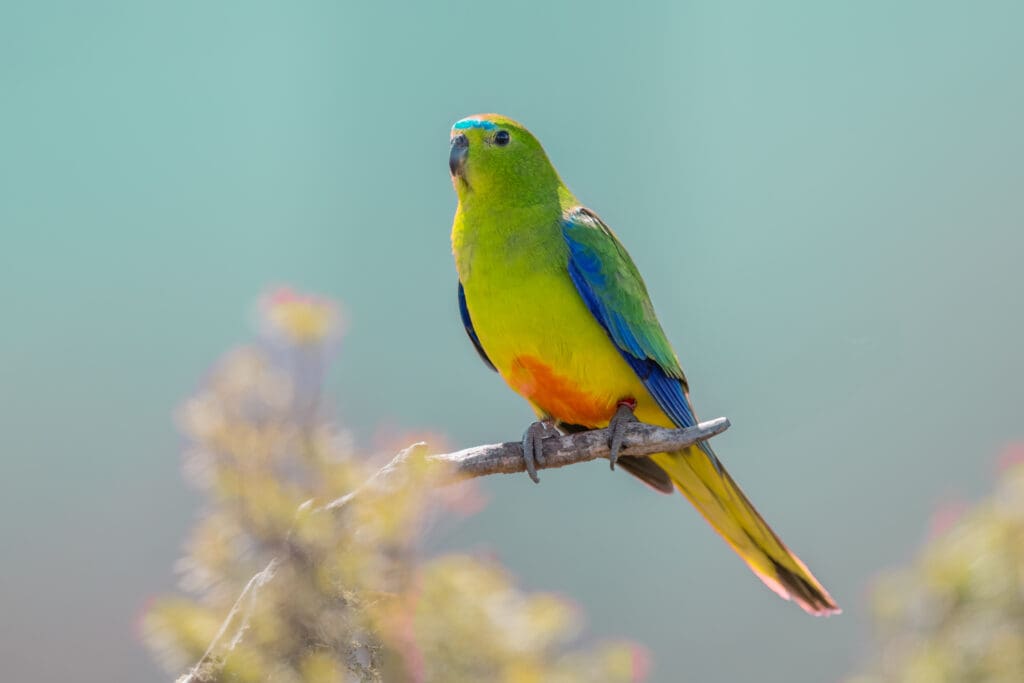The Orange-bellied Parrot (Neophema chrysogaster) is one of the rarest parrots due to the loss of its overwintering habitat and competition with other species.
In 2002, the World Parrot Trust supported the Orange-bellied Recovery Program with its Small Action Grants program that helped employ an Extension Officer for 8 weeks, expand the volunteer observer network, conduct a coordinated habitat-wide survey with results to the Recovery Team monitor and report activities at Piccaninnie Ponds, construct a feed table adjacent to Piccaninnie Ponds and develop a supplementary feed crop and study its use by the birds during winter migration
A recovery team for the Orange-bellied Parrot was first established in 1980. The wild population, which was estimated to number around 150 individuals in 2005, has since undergone a rapid decline. Individuals are being bred in captive breeding programs in Taroona, Tasmania, Healesville Sanctuary, Adelaide Zoo, Melbourne Zoo, Halls Gap Zoo (previously), Moonlit Sanctuary, Hobart Wildlife Centre in Tasmania, and Priam Parrot Breeding Centre. The captive population totals about 340 birds. Because of the precipitous decline in the wild population, an additional 21 birds from the wild population were captured in 2011 to provide genetic diversity in the species captive breeding program.
IUCN/CITES Status: IUCN Critically Endangered / CITES Appendix I
Population: 188 (2024), with over 300 birds in a captive breeding program. Decreasing.
Threats: This parrot has a restricted range. Is affected by fragmentation and degradation of its overwintering habitat. Male-female sex ratios are heavily skewed towards males. Likely causes of recent decline are an 2014 outbreak of Psittacine Beak and Feather Disease and the effects of a ten-year drought on productivity of saltmarsh plants in their winter habitat.
Range: Tasmania and coastal SE mainland Australia.
Natural history: The species’ breeding areas include temperate forests and moorland plains; wintering areas are mostly saltmarsh and pastureland with freshwater sources and roosting sites. Birds feed mainly on seeds and are seen in flocks, usually with a sentinel to warn the group of predators. In breeding areas birds roost communally in dense Melaleuca stands; individuals are sometimes seen in rural paddocks and around livestock.

